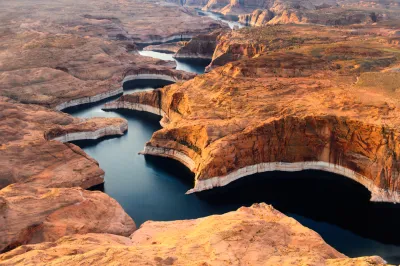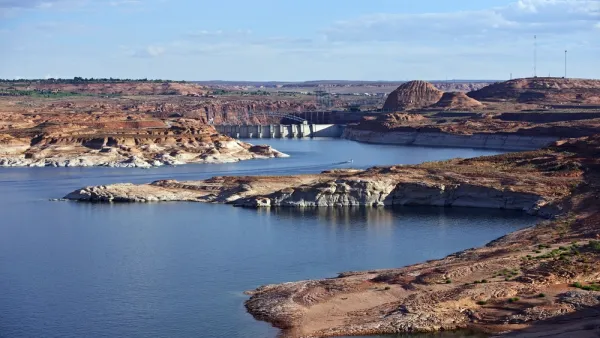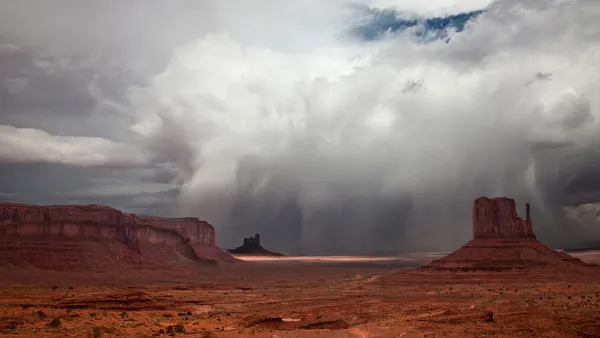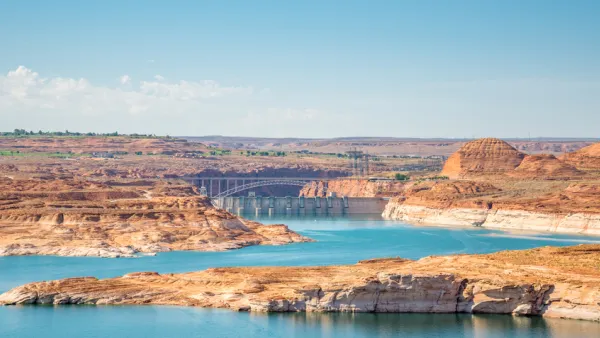Las Vegas has almost maximized its growth potential given projects for its future water supply—something has to give.

How big can Las Vegas grow before the water runs out?
That's the big question driving a deep investigation by The Las Vegas Review-Journal that includes nine installments in the series and two interactive features. Henry Brean does the writing.
At the center of the big report is the Colorado River, and one could say the story is about the Colorado River more than Las Vegas. Despite Nevada receiving the least water from the Colorado River of any of the seven states in the river's watershed (and Mexico), Las Vegas relies the most on Colorado River water of any large city.
As is well documented in the series and by many journalists in the Southwest, the Colorado River watershed is reeling from the effects of a 20-year drought, and two of the major storage facilities along the river, Lake Mead and Lake Powell have reached historic lows. A major collaborative effort has recently been approved by the Colorado River states, called the Drought Contingency Plan, or DCP by those involved in the process. The water chiefs of seven U.S. states (Arizona, California, Colorado, Nevada, New Mexico, Utah, and Wyoming) recently penned an op-ed for the Desert Sun urging Congress to approve the DCP. The DCP took significant effort and overcame many obstacles and setbacks to reach this point, but the need for such a plan couldn't be greater. Climate change models show rainfall and water supply decreasing in the watershed in the future—meaning all of the end users in the system will have to make due with less while keeping the river alive for environmental, cultural, and economic reasons.
For urban planners, Part 9 in the series raises the most broadly relevant questions about how Las Vegas can plan for growth with the existing and future water supplies. In that installment of the series, Bream says the question of how large Las Vegas given its water supply is tough to answer given the variables of drought, policy, and population growth. "But if it’s numbers you want, here’s one for you: 2,554,000," writes Bream. "That is the number of people the authority believes it can serve with the existing water supply if Las Vegas booms just as everything goes wrong on the Colorado River." For those keeping track at home, that's only 300,000 more than the city's current population.
For more on how the report came together, Kristen Hare reports on Brean's journalistic process for Poynter.
FULL STORY: The Water Question

National Parks Layoffs Will Cause Communities to Lose Billions
Thousands of essential park workers were laid off this week, just before the busy spring break season.

Retro-silient?: America’s First “Eco-burb,” The Woodlands Turns 50
A master-planned community north of Houston offers lessons on green infrastructure and resilient design, but falls short of its founder’s lofty affordability and walkability goals.

Delivering for America Plan Will Downgrade Mail Service in at Least 49.5 Percent of Zip Codes
Republican and Democrat lawmakers criticize the plan for its disproportionate negative impact on rural communities.

Test News Post 1
This is a summary

Test News Headline 46
Test for the image on the front page.

Balancing Bombs and Butterflies: How the National Guard Protects a Rare Species
The National Guard at Fort Indiantown Gap uses GIS technology and land management strategies to balance military training with conservation efforts, ensuring the survival of the rare eastern regal fritillary butterfly.
Urban Design for Planners 1: Software Tools
This six-course series explores essential urban design concepts using open source software and equips planners with the tools they need to participate fully in the urban design process.
Planning for Universal Design
Learn the tools for implementing Universal Design in planning regulations.
EMC Planning Group, Inc.
Planetizen
Planetizen
Mpact (formerly Rail~Volution)
Great Falls Development Authority, Inc.
HUDs Office of Policy Development and Research
NYU Wagner Graduate School of Public Service





























